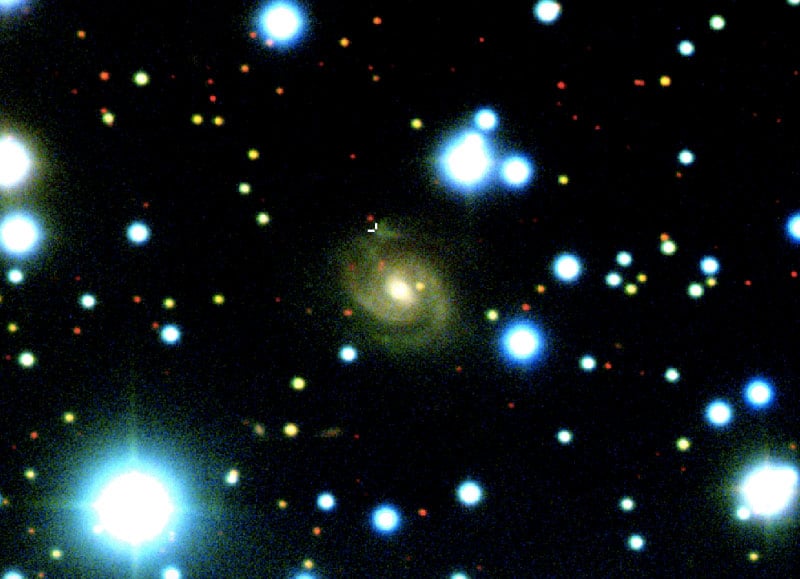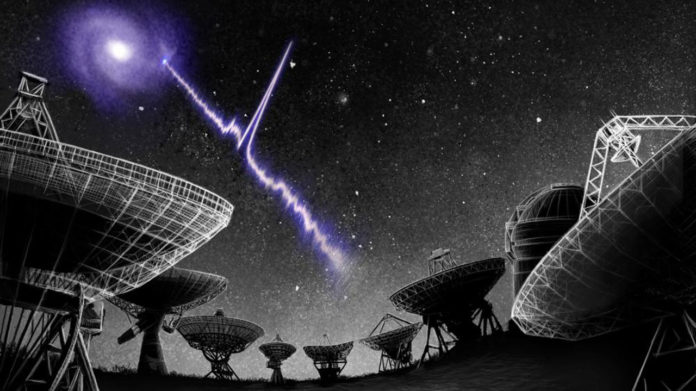Fast radio bursts (FRBs) are brief, bright, extragalactic radio flashes. Their physical origin remains unknown.
Some FRB sources exhibit repeat bursts. Although over a hundred FRB sources have been discovered, only four have been localized and associated with a host galaxy, and just one of these four is known to emit repeating FRBs.
Astronomers, once again, detected a mysterious repeating radio burst. When traced, the precise localization of this burst is to a star-forming region in a nearby massive spiral galaxy, whose properties and proximity distinguish it from all known hosts.
As noted, this is the second repeating FRB source, dubbed as ‘FRB 180916.J0158+65’, which lasts less than two-thousandths of a second. Fascinatingly, this FRB is the closest to Earth ever localized, allowing astronomers to study these events in unparalleled detail.

Telescopes in the European VLBI Network (EVN) have observed this Fast Radio Burst in a spiral galaxy (named SDSS J015800.28+654253.0), located half a billion light-years from Earth – specifically, from a region of that galaxy where star formation is prominent. The discovery, once again, changes researchers’ assumptions on the origins of these mysterious extragalactic events.
Benito Marcotte, from the Joint Institute for VLBI ERIC and lead author of the current study, said, “The multiple flashes that we witnessed in the first repeating FRB arose from very particular and extreme conditions inside a very tiny (dwarf) galaxy. This discovery represented the first piece of the puzzle. Still, it also raised more questions than it solved, such as whether there was a fundamental difference between repeating and non-repeating FRBs. Now, we have localized a second repeating FRB, which challenges our previous ideas on what the source of these bursts could be.”
Kenzie Nimmo, a Ph.D. student at the University of Amsterdam, said, “The found location is radically different from the previously located repeating FRB, but also different from all previously studied FRBs. The differences between repeating and non-repeating fast radio bursts are thus less clear, and we think that these events may not be linked to a particular type of galaxy or environment. It may be that FRBs are produced in a large zoo of locations across the Universe and require some specific conditions to be visible.”
The study is published in the journal Nature.
